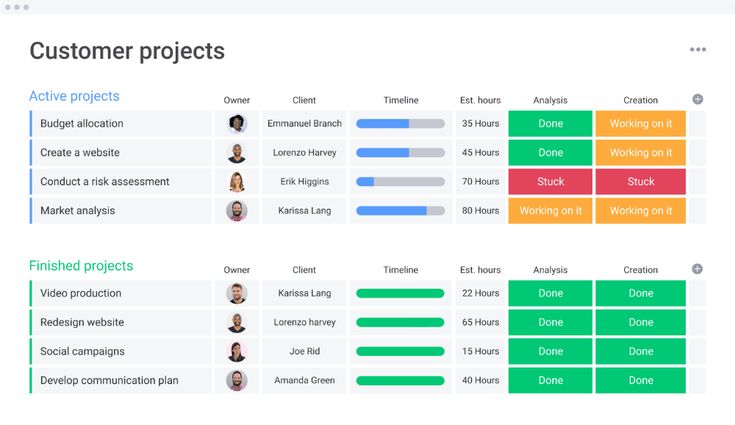Remote Workforce Solutions: Transforming Workplaces in 2025
Discover top remote workforce solutions for 2025, including hybrid models, AI tools, and cybersecurity strategies to empower small businesses.
3/18/20254 min read
The workplace of 2025 is all about flexibility, innovation, and technology. Remote work has shifted from being a temporary trend to becoming a cornerstone of modern business. For small businesses, this transformation brings both exciting opportunities and unique challenges. By adopting effective remote workforce solutions, businesses can thrive in this new era while tackling hurdles like collaboration gaps and cybersecurity risks.
At The Makeover Group (TMG), we’ve fully embraced remote work by building a global team that operates seamlessly across borders. Here’s a look at the top trends shaping remote workforce solutions in 2025 and how small businesses can leverage them for success.
Why Remote Workforce Solutions Are Essential
Remote work is now the standard for businesses worldwide. With advancements in technology and evolving employee expectations, companies must adapt to remain competitive. Remote workforce solutions empower small businesses to:
Boost Productivity: Flexible work setups enable employees to perform at their best without traditional office constraints.
Tap into Global Talent: Remote work breaks down geographical barriers, allowing businesses to hire top talent worldwide, fostering diversity and innovation.
Cut Costs: By reducing the need for large office spaces, businesses can save on overhead while maintaining efficiency.
Increase Employee Satisfaction: Remote options improve morale and retention by offering work-life balance and autonomy.
Top Trends in Remote Workforce Solutions for 2025
1. Hybrid Work Models
Hybrid work models blend the flexibility of remote work with the collaborative advantages of in-person interactions. Employees can choose their work environment based on tasks, creating a balanced approach that boosts creativity and productivity.
For instance, a small marketing agency might allow its creative team to work remotely while holding monthly in-office strategy sessions to encourage collaboration.
How to Implement Hybrid Models:
Use scheduling tools to coordinate remote and in-office work seamlessly.
Design office spaces for collaboration rather than individual desks.
Establish clear guidelines for when employees should be onsite versus remote.
2. AI-Powered Workflows
Artificial intelligence is revolutionizing team operations by automating repetitive tasks and optimizing workflows. For small businesses, AI tools can streamline processes, reduce errors, and free up time for strategic activities.
Examples of AI Applications:
Automated CRM systems to track leads and sales pipelines effortlessly.
Intelligent scheduling tools to optimize meeting times across global teams.
Real-time transcription tools for virtual meetings to enhance accessibility and record keeping.
3. Global Talent Pools
Remote work has erased geographical boundaries, enabling small businesses to hire skilled professionals from around the globe. This trend fosters diverse teams, bringing fresh perspectives and innovative problem-solving.
For example, an IT support business could hire developers from different countries to leverage varied expertise while maintaining 24/7 service coverage.
Tips for Building a Global Team:
Use platforms like LinkedIn or specialized job boards to find remote candidates worldwide.
Implement tools that support multilingual collaboration.
Create onboarding processes tailored for remote employees across regions.
4. Cybersecurity Solutions
As remote work grows, so do cybersecurity challenges. Protecting sensitive data is critical for small businesses operating remotely. Investing in robust security measures ensures teams can work confidently from anywhere without compromising data integrity.
Key Cybersecurity Practices:
Enable multi-factor authentication (MFA) for secure system access.
Use encrypted tools like VPNs for secure file sharing.
Provide regular training on recognizing phishing attempts and other threats.
5. Employee Well-Being Initiatives
Remote work can blur the lines between work and personal life, making employee well-being a top priority in 2025. Flexible schedules, virtual wellness programs, and supportive leadership can help maintain motivation and prevent burnout.
For instance, a family-run retail business transitioning to e-commerce might offer flexible hours during peak seasons and host virtual wellness sessions for relaxation.
How to Prioritize Well-Being:
Encourage regular breaks during the workday.
Provide mental health resources like counseling or mindfulness apps.
Foster an open-door policy where team members feel comfortable discussing challenges.
How Small Businesses Can Leverage Remote Workforce Solutions
Implementing remote workforce solutions requires strategic planning tailored to your business needs:
Invest in Scalable Technology: Equip your team with tools like cloud-based project management software or AI-powered analytics that grow with your business.
Set Clear Objectives: Define measurable goals for productivity, collaboration, and employee satisfaction.
Enhance Communication Channels: Use tools like Zoom or Slack for regular check-ins and shared dashboards for transparency.
Upskill Your Team: Offer training in digital skills essential for remote success.
Track Performance Metrics: Monitor KPIs such as task completion rates or customer satisfaction to ensure efficiency.
The Impact of Remote Workforce Solutions on Small Businesses
Adopting remote workforce solutions can revolutionize small business operations by unlocking new growth opportunities:
Increased Efficiency: AI-powered workflows reduce time spent on admin tasks, boosting productivity.
Expanded Market Reach: Access to global talent enables businesses to cater to international markets with localized expertise.
Cost Savings: Eliminating physical office requirements cuts overhead expenses without sacrificing quality.
Higher Employee Engagement: Flexible arrangements empower employees, leading to increased job satisfaction.
Preparing Your Business for the Future of Remote Work
As the future of work evolves, small businesses must stay ahead by:
Staying informed about emerging workplace trends.
Regularly evaluating processes against industry benchmarks.
Experimenting with innovative solutions to enhance agility in decentralized setups.
By embracing these changes, small businesses can not only survive but thrive in the dynamic world of 2025 and beyond.
Want to future-proof your business? Reach out to us at hello@yourtmg.com to learn how TMG can help you build effective remote workforce solutions tailored to your needs. Let’s transform the way you work—together!












Stay connected
© 2024. All rights reserved.